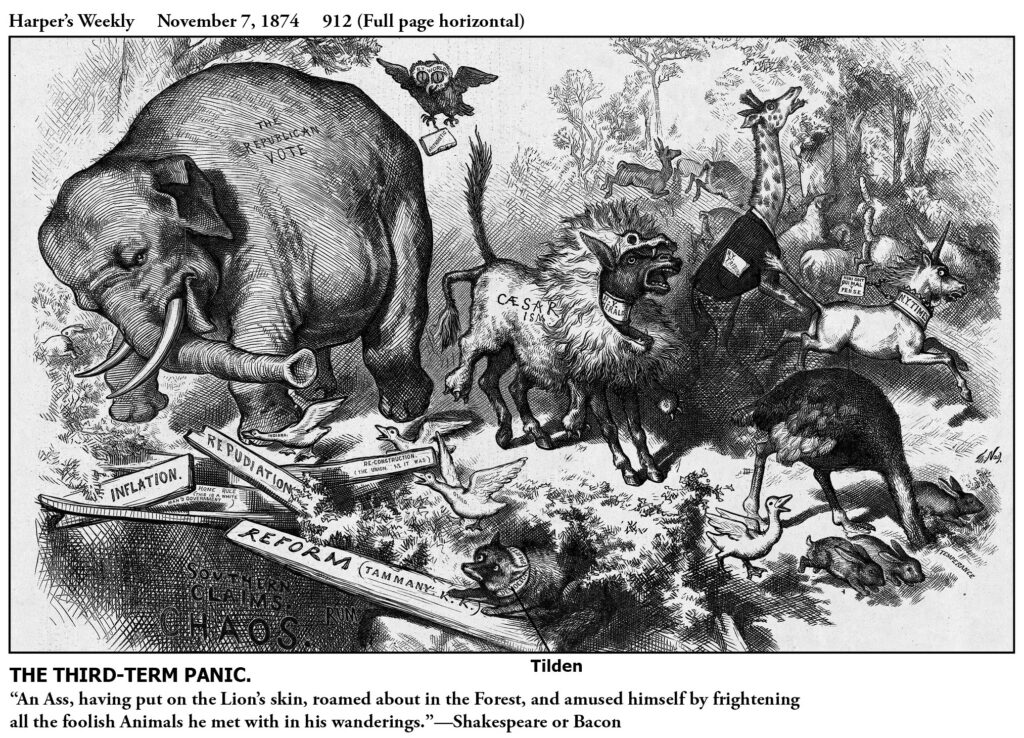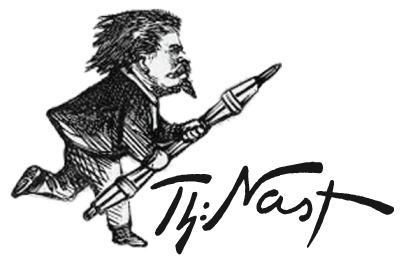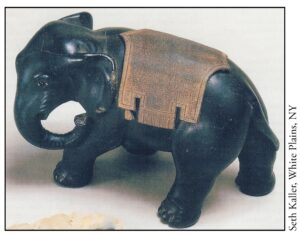
Harper’s Weekly – November 7, 1874
The Republican Elephant
Nast created the Republican Elephant almost five years after his first depiction of the Democratic Donkey. At the time, and for seven cartoons afterward, it represented the Republican Vote, not the Republican Party. The Elephant’s actual emergence on October 29, 1874 — six days before the mid-term election — paralleled the timing of the Tammany Tiger’s birth three years earlier.
Nast’s target in this cartoon was James Gordon Bennett, Jr., the wealthy, conceited, autocratic editor of the Herald. In June 1873, Bennett’s Herald livened up the dog days summer by accusing President Ulysses Grant of “Caesarism” — thirsting for a third term.
The ass in the lion’s skin who scared the other animals was, of course, Bennett, braying about Caesarism. In Aesop’s Fable, Reynard, the fox, said “I should have been frightened too if I had not heard you bray.”
The panicked Elephant was about to trample the Democratic planks — favoring inflation, repudiating the national debt, de-fanging Reconstruction, and pushing phony Tammany reform — and plunge into the concealed trap of Southern claims, chaos and rum. The latter related to the ostrich burying its head in the Temperance sand because New York’s Temperance Republicans had nominated a ticket that threatened to siphon off mainstream pro-liquor votes.
Nast’s choice of the ponderous pachyderm probably came from an ornament he had noticed on Grant’s desk during his numerous visits to the White House when he became friendly with Grant in early 1872 during his recruitment to work on the President’s reelection campaign. The black elephant had a gilt-metal blanket which lifted to reveal a brass and glass inkpot.
Moreover, the elephant’s characteristics fit Nast’s needs for a Republican symbolic image. It was large, dominant, smart and usually well behaved, but stampeded out of control when frightened. Until that happened, it had exceptionally thick skin like Grant.

